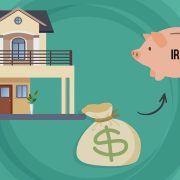Top Six Self-Directed Real Estate IRA Mistakes Investors Make
Experience is the best teacher, it is said. But it’s a fool who learns by no other. It’s the same with Self-Directed IRAs – and in real estate investing in general. You can read all the books and blogs you want, but it’s no substitute for the School of Hard Knocks and making decisions in the real world with real money. Everyone makes mistakes – and the greatest investors have made more than most. They are just well-capitalized enough to recover. And, of course, they do not give up. The most successful Self-Directed Real Estate IRA investors are serious students of the craft. They work very hard trying to learn from the mistakes of others. Here are some of the most common mistakes real estate investors make, so you can learn from them, too!
1. Falling in love with a property. Many an investor has fallen into this trap: The house is just so lovely that they have to own it – and therefore they are willing to pay too much. Getting too attached to a deal makes it hard to walk away when the price is not right. It clouds buyers’ judgment. They may become blind to serious defects. Do not get so enamored with the wonderful lake view or the gorgeous granite countertops and decadent slate shower in the master bathroom that you fail to detect a serious issue with the plumbing or foundation – and wind up with a money pit instead of a moneymaker. A great house is not always a great investment.
2. Relying on tenants to be perfect. Yes, most tenants work out just fine in the long run. But there are little bumps along the way. That’s life in real estate. If tenants had perfect credit and perfectly reliable cash flow and never got sick and never made dumb money decisions – they would probably be owners and not renters by now.
Tenants are occasionally late on the rent. Even good, well-meaning ones. Things happen. If you have to evict, it can take weeks or months. All the while you still have to pay your mortgage payment, taxes, insurance, maintenance, and the whole nine yards. Smart landlords do not rely on their tenants to be perfect to make their mortgage. You need to have enough in reserve to deal with tenants who come on hard times, who flake out, or are even downright toxic and who need to be evicted.
Then you need to have enough cash in reserve to do your rent-ready repairs and turnaround, market the property and make it through a possible vacancy period. If you cannot keep up with your mortgage payment the whole time, you may face late fees and other credit issues.
If your plan relies on your tenants being perfect, find another plan. Especially at lower price points where you need to market to lower credit tiers.
3. Poor tenant screening discipline. Many a landlord has taken a beating by renting to people who “seem nice.” There are tons of very nice people with terrible credit, whose financial lives are in a constant state of chaos. And some are downright manipulators. You do not want either category as tenants.
First put your tenant criteria down on paper. Document it. Write a memo for posterity and put it in your ads. Come up with a minimum verifiable monthly income (2.5x to 3x rent is reasonable), and a minimum credit score and stick to it. Also, come up with a criminal background check criteria that’s realistic for your market, too, such as no criminal convictions in the last five years, ten years or ever.
And do not make exceptions for people who “seem nice.” When you don’t adhere to your own tenant screening criteria, you leave yourself vulnerable to accusations of illegal discrimination.
4. Failing to budget for maintenance. You have to set aside enough money to replace the roof, deal with plumbing and electrical issues, and cover your deductible for any insurable hazards. A common rule of thumb for investors is to plan on setting aside at least 10% of gross rents for maintenance costs. That doesn’t include capital improvements. That’s just the bare minimum.
Looked at more broadly, most experienced investors expect that operating expenses, over time, will average roughly 50 percent of operating revenue. Repairs are just part of that equation. This also includes taxes, renovation costs, vacancy and turnover expenses, appliance replacement, attorneys’ fees, landscaping, insurance, HOA fees, roof replacements, property management fees, etc.
Budget for all these things.
5. Underinsuring. Many investors think they can save money by insuring the home for less than it’s worth. That saves a few dollars in premium in the short run. But it’s disastrous in the event of a claim. This is because co-insurance rules allow insurance companies to reduce your payout by the percentage you underinsured.
Often, homeowners also fail to account for the real cost of repairing or replacing older homes. Take a look at your landlord’s and homeowners insurance policies. If they make reference to “fair market value,” that means that the insurance company will subtract depreciation from any settlement. So, unless you have been saving money in a side account to keep up with depreciation, you may not have the cash it takes to make you whole in the event of a covered loss. To ensure you get a check that covers your real-world cost to replace or repair damages, look for replacement value coverage.
Interested in learning more about Self-Directed IRAs? Contact American IRA, LLC at 866-7500-IRA (472) for a free consultation. Download our free guides or visit us online at www.AmericanIRA.com.









